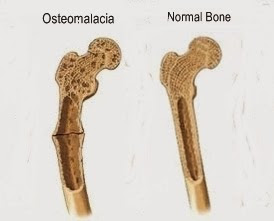Tuesday, October 27, 2015
Wednesday, October 21, 2015
HeLa cells
HeLa cells
HeLa
cells are human epithelial cells obtained from cervical cancer cells maintained
in tissue culture since 1951 when they were first grown, in a laboratory and
were the first type of human cancer cell to be grown continuously for
experiments. They were named after a cancer patient, Henrietta Lacks, the cells
were taken from her tissue samples and grown by Dr. George Gey who realized
that some of Henrietta Lacks' cells were different from
normal cells.
normal cells.
Cell
lines have various purposes, such as studying the effects of diseases or
developing medications and vaccines. Cell lines are often named after the people
from whom they were originally taken from, HeLa for example comes from the
first two letters of Henrietta Lacks name who was the patient they got the cells
from. Basically its a line of cells that is taken from a person and used
for scientific research.
In
1951, Henrietta Lacks, made one of the greatest medical contributions.
The cells, taken from her cervical cancer biopsy, and became the first immortal
human cell line. HeLa cells are an indestructible,
continuously growing cell line of human cancer cells. Normal body cells would
die however, HeLa cells continue to survive indefinitely in laboratories,
something that has allowed them to assume huge importance in biomedical
research. Since the mid-20 century, the cells have been distributed around the
world and are used in many medical endeavors, including research into the
nature of cancer, the development of vaccines, the mapping of genes, the
treatment of diseases, and the mechanisms involved with programmed cell
death.
http://bigpictureeducation.com/quick-guide-hela-cells
http://www.accessscience.com/content/importance-of-hela-cells/BR0826141
Sunday, October 18, 2015
chapter 8 lit circle
Osteomalacia
Osteomalacia is a softness in the bones that is usually due to deficiency of vitamin D or calcium. Soft bones are more likely to bow and fracture than are healthy bones.
In order to detect Osteomalacia their are various test like Blood and urine tests, X-ray and Bone biopsy.
If detected early a simple supplement for vitamin D or calcium is enough to cure the condition. In some cases, vitamin D can be administered as an injection
through the skin, or intravenously through a vein in your arm.
Preventing osteomalacia can be done by having a foods with high vitamin D or by taking supplements, if needed.
U.S. National Library of Medicine: https://www.nlm.nih.gov/medlineplus/ency/article/000376.htm
Healthline: http://www.healthline.com/health/osteomalacia#Overview1
MedicineNet.COM:http://www.medicinenet.com/script/main/art.asp?articlekey=4680
U.S. National Library of Medicine: https://www.nlm.nih.gov/medlineplus/ency/article/000376.htm
Healthline: http://www.healthline.com/health/osteomalacia#Overview1
MedicineNet.COM:http://www.medicinenet.com/script/main/art.asp?articlekey=4680
Tuesday, October 13, 2015
Chapter 5-6
Discussion Master-
Chapters 5-6
Chapters 5-6
5
Flotsam and Jetsam
- As Mr. Maples 'puts himself' in the victims role at the time of death, does this not cloud his judgment as he gets connected in a way to the victim?
- When he places himself in the murderer's perspective he questions weather or not he paused or he was in a rush... is this important in identifying the murderer/murder weapon?
- Is it possible from a specific chain saw to be tracked down and through that get the person who did the dismemberment, or can one only notice the model of the chain saw?
- Do most murderers have similar styles or is his comment on joints and bones just pertaining to dismemberment?
- What happens to the remains that are found but can not be identified? where do they go?
- In the sharks case, why wouldn't the shark finish the body? why would it just take a small part? and why does he say knowing it was a human make it better if they never found out which human?
- How long would it take for a whole bone to dissolve in a sharks stomach?
- Did Mr. Maples have to take courses in criminal justice because he does so much crime work?
- How do they know when the crime had to do with gangs or with 'ordinary' citizens?
- Does Mr. Maples give all his cases names or just the ones that really call out to him like "The Case of the Pale-Faced Indian"?
6
"When the Sickness Is Your Soul"
- What are different ways to commit suicide?
- Why is it so hard to tell if someone committed suicide or if it was an accident?
- Why do (mostly) girls dress nice to die?
- What is Auto-erotic Asphyxiation?
- What are some bizarre accidents?
- Can you tell from the teeth how old a person is?
- How many suicides are there annually?
- What is the least painful ways to die?
- What are symptoms of someone considering suicide?
- How so forensic anthropologist connect to cases?
Subscribe to:
Posts (Atom)



